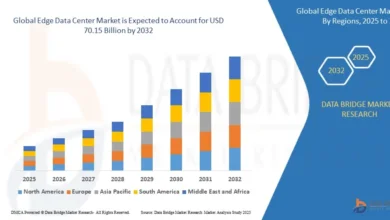How AI Search Is Changing eCommerce SEO: What Online Stores Need to Do Now

Shoppers no longer type short keywords and scan ten blue links. They ask full questions, compare choices, and want quick help. AI now sits at the top of many results and gives a smart summary with links.
Some clicks move from classic listings to these answer blocks, yet brands that prepare can still win. The path is simple in shape but not easy in practice. You need clean tech, helpful content, and a plan to get cited maybe with the help of an eCommerce SEO agency. You also need to measure new signals and move fast.
That’s why I’ve written this article so that you’lll learn what has changed, what to fix first, and how to stay visible as AI search grows.
What AI Search Looks like Today
AI can show a short, helpful summary at the top of the page and list sources next to it. An Ecommerce SEO agency sees this shift every day and tries to act on it before another trend comes by. On some queries, users click less because they get a quick answer. On others, people still click to read reviews, specs, and guides before they buy. Two things matter now. First, there is no special switch to “rank in AI.” Strong, people-first SEO still drives inclusion. Second, links in the AI answer often point to pages that teach, compare, or show first-hand use.
What this means for store owners
- Treat AI answers as a new shelf on the same aisle. Your page can still show there.
- Expect more long-tail, multi-part queries. Write for them.
- Forum posts, videos, and how-to walk-throughs get cited often. Add these to your mix.
The Traffic Picture is Mixed, so Plan for Both
Studies show that when AI summaries appear, some users click fewer links. At the same time, search teams say the total volume of clicks is steady in many areas and that the clicks that do come are more serious. The lesson is clear. Do not chase a single metric. Look at quality clicks, assisted revenue, and saved carts. Watch which pages win or lose when an AI answer shows. Then adjust your plan by query group, not by gut feel.
How to measure the new reality
- Track “Web” performance in your analytics tools and in native search dashboards.
- Watch for longer queries, question words, and brand-plus-intent terms.
- Compare CTR and revenue per session on pages that appear in answer-heavy SERPs.
- Tag and test page types: product, variant, collection, guide, FAQ, and video.
What to do Right Now
1) Build Answer-First Content Tied to Revenue
You want to be the source an AI answer cites. That means writing content that solves the task, fast. Start with your top 25 money terms and map questions people ask before they buy. Write a short, clear answer at the top, then show steps, images, and proof.
Page ideas to ship this month
- Buyer’s guides for each collection with clear picks by use case.
- Comparison pages that explain how models differ and who each model fits.
- “How to choose” checklists for size, fit, and parts.
- Post-purchase guides such as set-up, care, and simple fixes.
- Short videos with transcripts on key steps and specs.
2) Raise your Chance of Being Cited
AI tools tend to cite pages that are easy to parse and that show real work. Make that simple.
- Use short, specific headings that match the question.
- Put the one-sentence answer up front.
- Include steps, checklists, and plain-language definitions.
- Add original photos, charts, and video. Use captions that name the thing.
- Show first-hand proof: lab notes, test data, or a short field trial.
- Link out to helpful sources where it aids the reader.
3) Strengthen Structured Data for Shopping
Structured data helps machines read your page. It also supports richer results and can improve your odds in AI answers.
- Use Product markup on every product page with price, availability, ratings, shipping, and returns.
- Add merchant listing markup where it fits, including sale pricing and return-fee details.
- Mark up product variants and give each variant a clean URL when you need to rank it.
- If you host 3D assets or AR, connect the 3D model to the right product.
- For certain categories, add certification data where the spec applies.
4) Ship Clean Tech that Crawls Well
AI features pull from the same index as classic search. If a page is hard to crawl or blocked from snippets, it will not appear. Fix the basics and keep them stable.
- Make sure robots.txt and platform settings allow crawl and snippets.
- Keep important content in the HTML, not only in scripts.
- Speed matters. Aim for fast first load and good interaction.
- Use internal links to surface deep products and guides.
- Keep sitemaps fresh. Include image and video sitemaps if you have them.
5) Design for Multi-Intent Journeys
AI answers break a big task into parts. Your site should mirror that path.
- Link from buying guides to product pages and back.
- On product pages, add FAQs that answer pre-buy and post-buy questions.
- Add community Q&A or reviews with real photos.
- Offer quick compare blocks and a save-for-later flow.
Conclusion
AI search is not the end of organic growth. It is a shift in how results are shown and how users read them. Stores that win focus on clear answers, proof of use, and tidy tech. They add schema the right way, keep product data fresh, and publish media that shows the work.
They also measure what matters, not just old school CTR. If you want support, an eCommerce SEO agency like ResultFirst can work with your team to ship these changes faster. Start with one category, fix the crawl, add answer-first pages, and track revenue. Then repeat. Small, steady steps beat big promises in this new search era.






